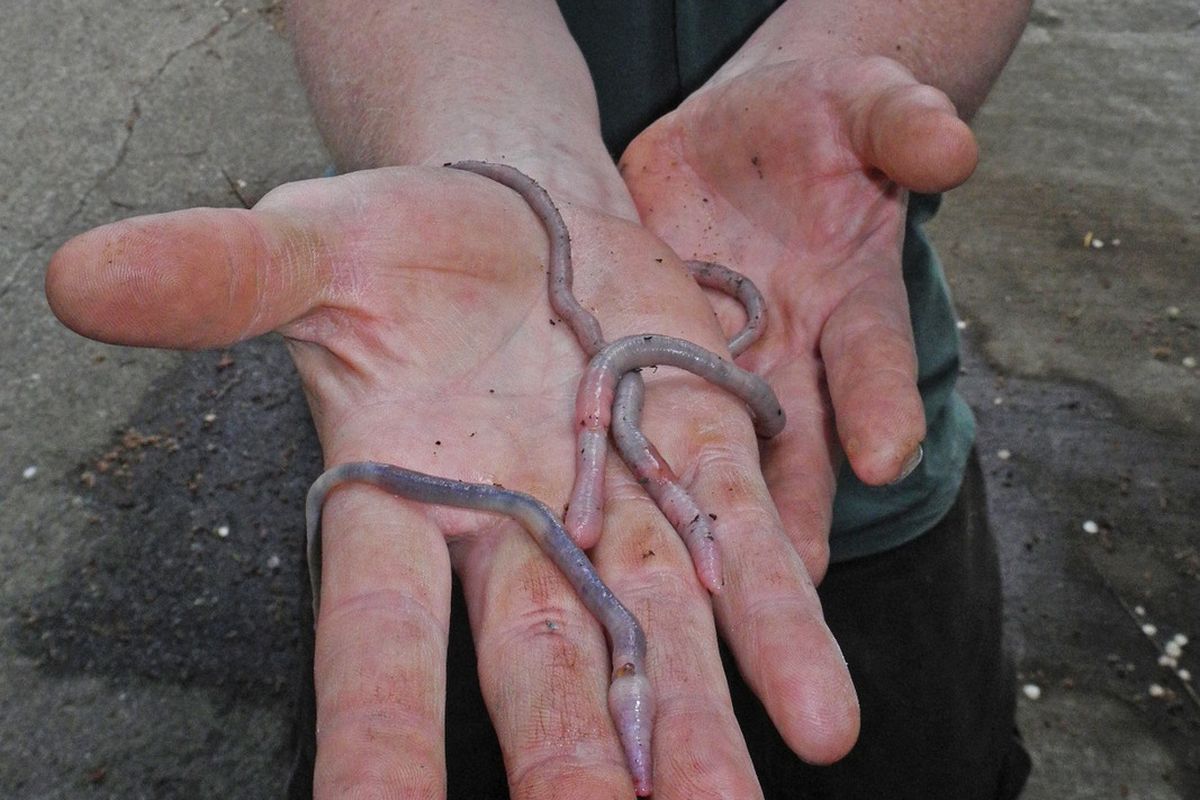Latah County man suspects giant Palouse earthworms near Moscow

WILDLIFE -- Cass Davis of Latah County discovered last weekend what he believes are three specimens of the extremely rare giant Palouse Earthworm on Paradise Ridge south of Moscow, according to the Friends of the Clearwater.
Paradise Ridge is a long, narrow rise with remnants of the native grasslands and rare plant species that once blanketed the Palouse Prairie. The ridge is threatened by plans for widening and rerouting U.S. 95, and environmentalists are lobbying to save it.
Davis says, who lives on the ridge, he has more evidence to bolster protection pleas for the area.
“I submitted two specimens to the University of Idaho from Paradise Ridge in 2012,” said Cass Davis. “Since then, I have been searching for more but have been unsuccessful, until the other day."
The giant Palouse earthworm was considered by some scientists to be extinct until a 2005 discovery by a University of Idaho graduate student in Albion, WA. In 2010, another university graduate student, along with a research support scientist, found two more worms that were eventually confirmed.
"It's really cool that potentially a few more Giant Palouse Earthworms have been found on the ground surface here in the Palouse," stated David Hall of the Palouse Prairie Foundation. "It is important to preserve the habitat in which they live. There are probably very few left, and they may have an important role in production of the great soils we have here."
The native Palouse Prairie is recognized as one of the most endangered ecosystems in the United States, the groups say, noting that less than 1 percent of native prairie is still intact.
“These giant earthworm specimens provide additional evidence concerning the importance and uniqueness of Paradise Ridge and the Palouse region,” said Tim Hatten with the Moscow-based Invertebrate Ecology. “Whether it’s rare plants, rare worms or native pollinators, they are all important pieces to what’s left of the Palouse Prairie and they deserve protection.”
The giant Palouse earthworm is native to the Palouse region and is one of the few native worms in the United States.
After receiving a petition by conservationists to list the worm under the Endangered Species Act, the U.S. Fish & Wildlife Service has ruled that there was not sufficient data to warrant listing.
“After the Palouse Prairie was reduced to wheat and lentil fields at the beginning of the 20th century, there have only been about a dozen Giant Palouse Earthworms found by scientists and volunteers,” said Steve Paulson of Friends of the Clearwater. “It is time to protect the Giant Palouse Earthworm. Failing to protect the worm would be the equivalent of throwing away our heritage.”
